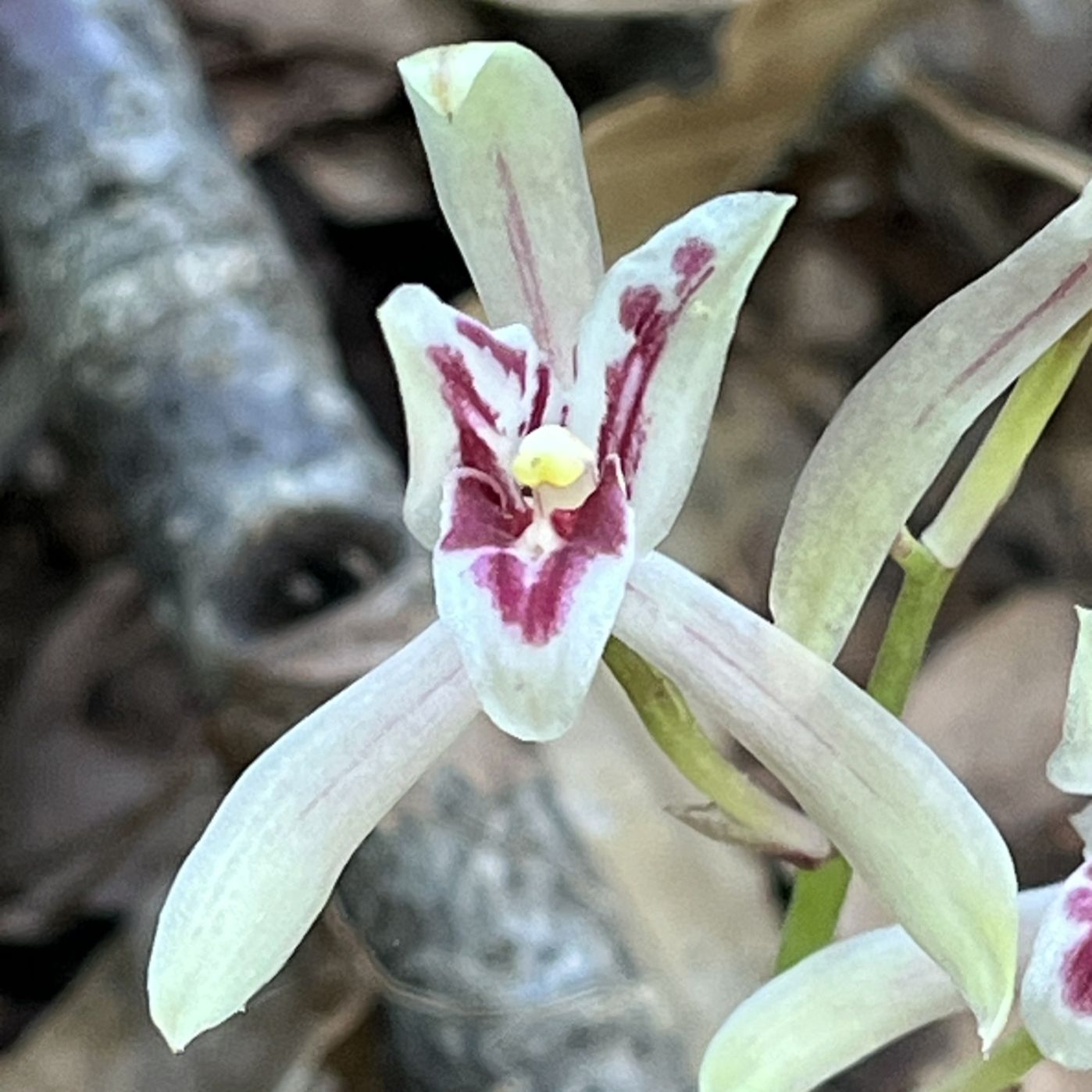マヤランは葉緑素を持たず、薄暗い林床で担子菌類の外生菌根菌と共生。菌糸網によって、常緑広葉樹から供給される炭水化物で生育します。
Cymbidium macrorhizon lacks chlorophyll and lives in symbiosis with basidiomycorrhizal fungi on the dim forest floor. It grows on carbohydrates provided by evergreen broad-leaved trees through its mycelial network.
【仮名】マヤラン
【和名】摩耶蘭
【英名】Cymbidium macrorhizon, Long Rhizome Cymbidium
【学名】Cymbidium macrorhizon
【誕生】07/ 02
【開花】06, 07, 09, 10月
【花色】White, Purple
マヤラン
マヤランの概要
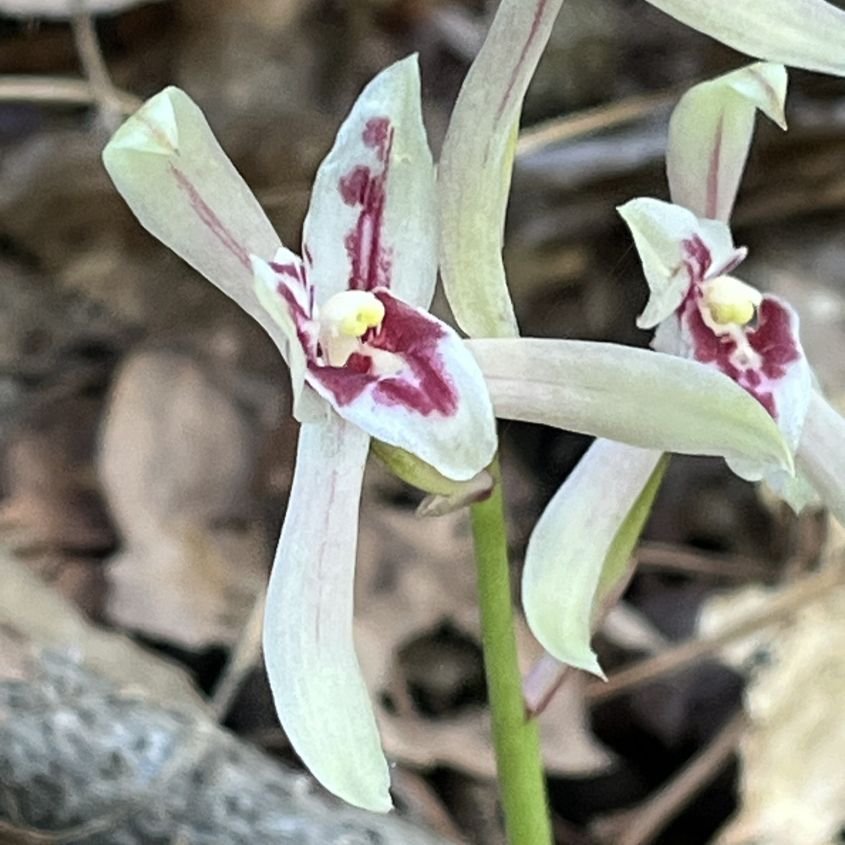
マヤランはラン科シュンラン属の多年草。日本では本州の福島県以南、四国、九州、琉球諸島、国外では朝鮮半島、台湾、中国南部、ヒマラヤ地域に分布しています。葉緑素を持たず、担子菌類の外生菌根菌と共生。菌糸網によって、常緑広葉樹から供給される炭水化物で生育します。
マヤランの名前
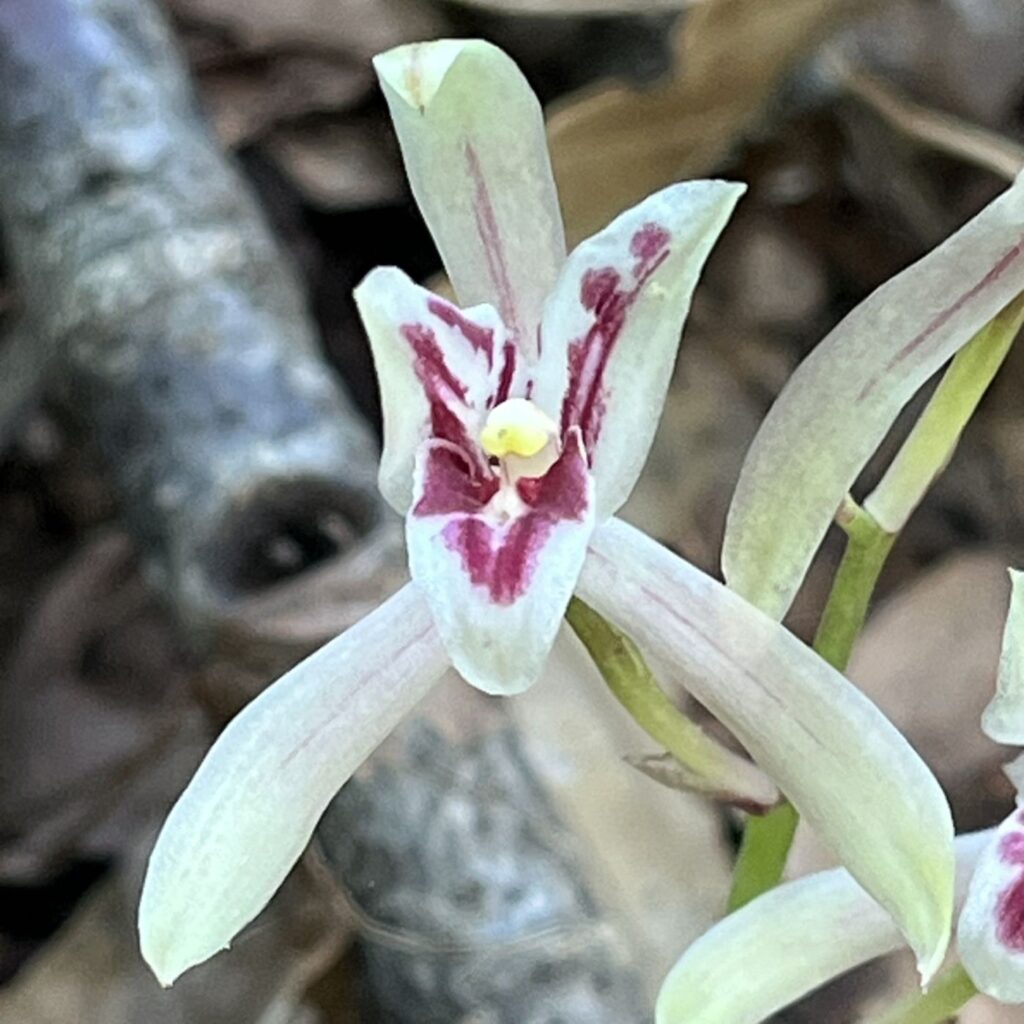
マヤランの和名の由来は兵庫県神戸市の摩耶山で明治時代初期に発見されたから。学名は英国の植物学者ジョン・リンドリーによって1833年に記載されました。ラテン語の属名シンビディウムは「舟」という意味で、唇弁に由来。種小名マクロリゾンは「大きな根茎」という意味です。
マヤランの姿形
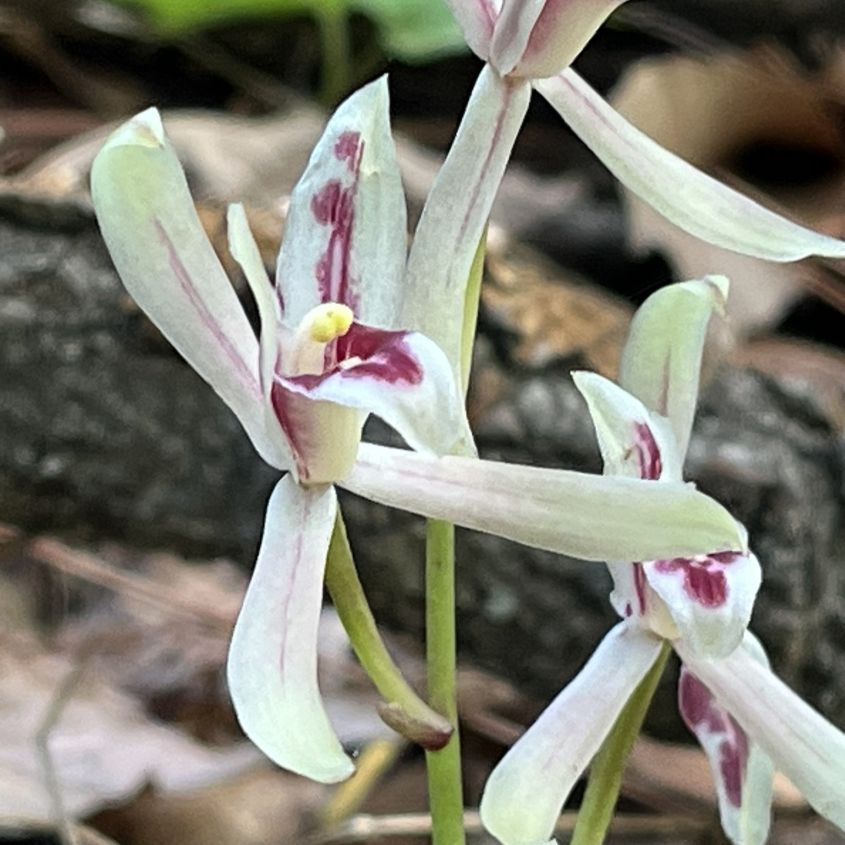
マヤランの根茎は白色の多肉質で珊瑚のように分岐します。褐色の花茎が立ち、小さな鱗片状の葉が疎らに互生。花は白色の花冠に赤紫色の模様が入ります。背萼片が1枚、側花弁が2枚、側萼片が2枚、唇弁が1枚、髄注が突出。花後の蒴果は熟すと裂けて微小な種子を散らします。
マヤランの近縁
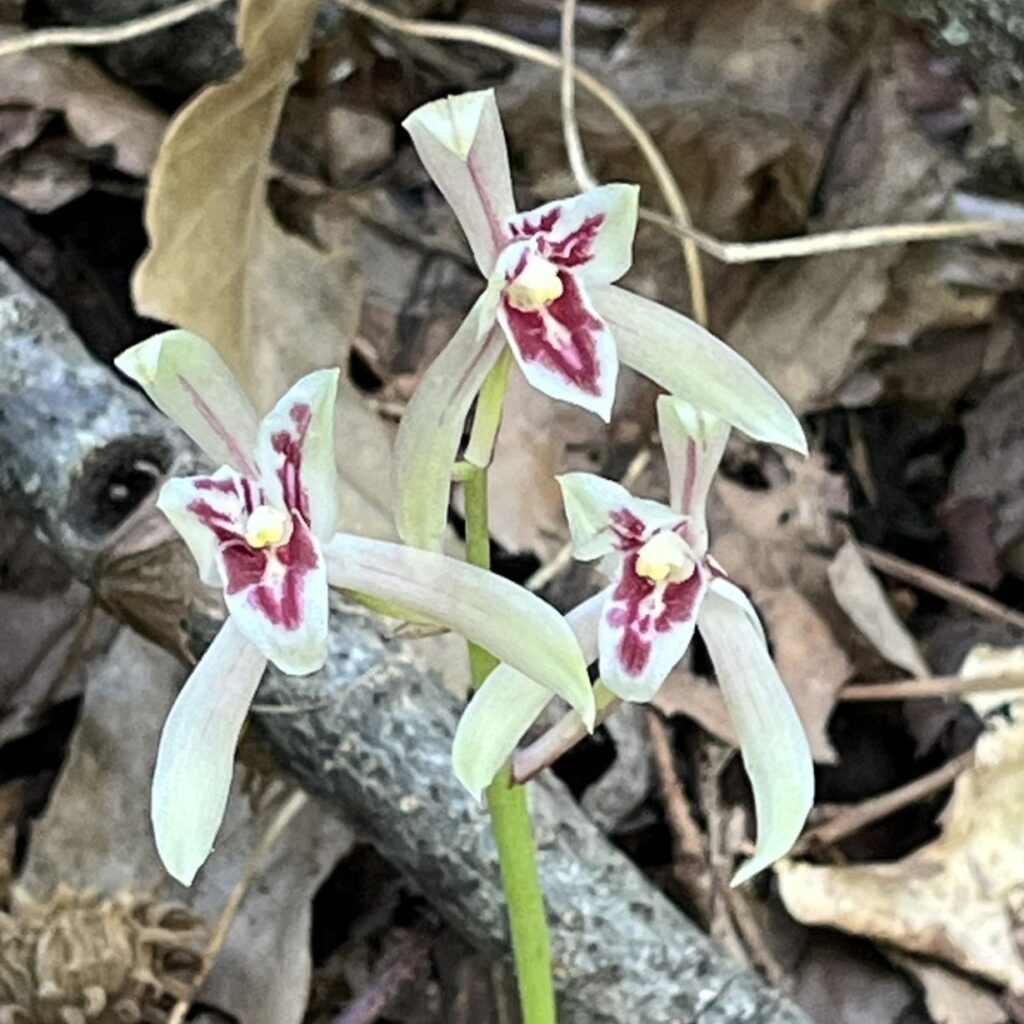
マヤランの近縁種「相模蘭」は神奈川県の相模地方で発見。同じように葉を持たず、薄暗い林床で育ちます。花冠は模様のない白色で、側花弁が幅広。かつて「相模蘭擬き」と呼ばれたり、摩耶蘭の品種・変種とされたこともありますが、今は和名も定まり、遺伝的に独立した種です。
Cymbidium macrorhizon
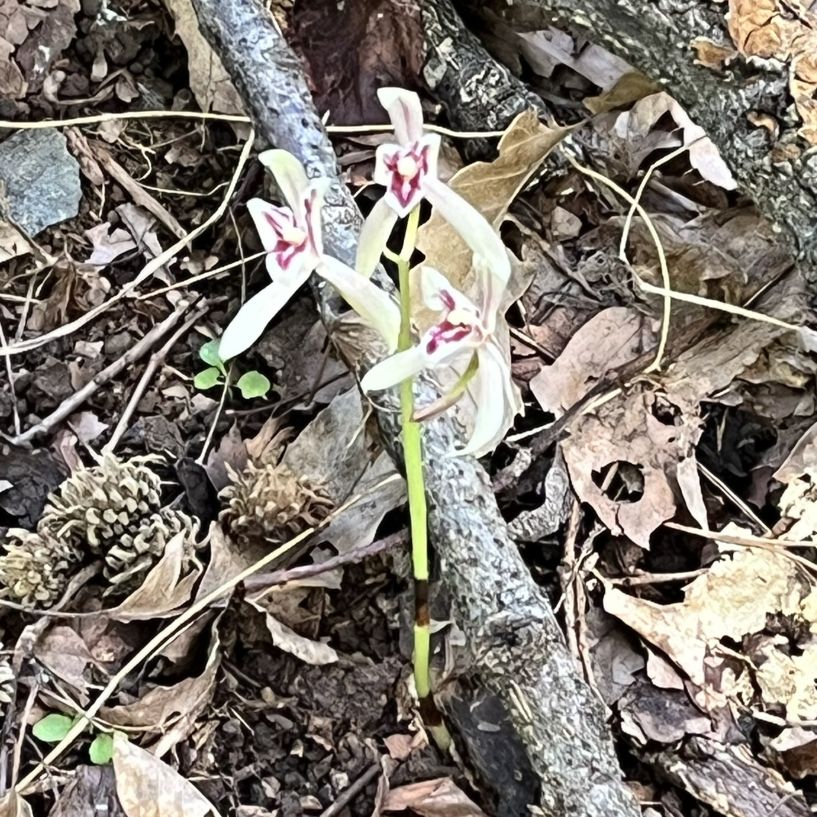
Cymbidium macrorhizon is a perennial herb of the Orchidaceae family. It is found in Japan, south of Fukushima Prefecture on Honshu, Shikoku, Kyushu, and the Ryukyu Islands, and overseas in the Korean Peninsula, Taiwan, southern China, and the Himalayas. It lacks chlorophyll and lives in symbiosis with basidiomycorrhizal fungi. It grows on carbohydrates provided by evergreen broad-leaved trees through its mycelial network.
The Japanese name for Cymbidium macrorhizon is “Maya orchid,” named after its discovery in the early Meiji period on Mt. Maya in Kobe City, Hyogo Prefecture. Its scientific name was described by British botanist John Lindley in 1833. The Latin genus name, Cymbidium, means “boat” and is derived from the lip. The specific epithet, macrorhizon, means “large rhizome.”
Cymbidium macrorhizon has a white, fleshy, coral-like rhizome that branches. Its brown flower stalks are upright and covered with sparse, alternate, small, scale-like leaves. The flowers have a white corolla with a purple pattern. They have one dorsal sepal, two lateral petals, two lateral sepals, one lip, and a protruding medulla. After flowering, the capsule splits open upon ripening, scattering tiny seeds.
Cymbidium nipponicum, a closely related species to Cymbidium macrorhizon, is known in Japanese as “Sagami orchid” because it was discovered in the Sagami area of Kanagawa Prefecture. Like macrorhizon, it is leafless and grows in the dim forest floor. The corolla is white with no pattern and the lateral petals are wide. It was once called “False Sagami orchid” and was considered a variety or cultivar of macrorhizon, but now it has a set Japanese name and is considered a genetically independent species.

